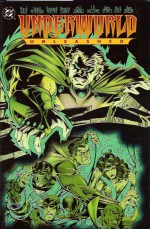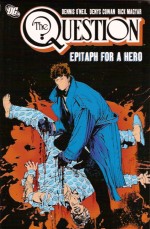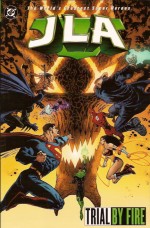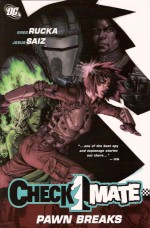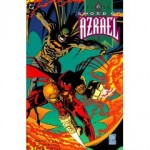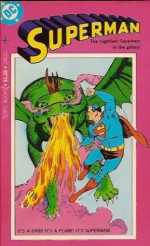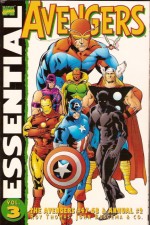
By Roy Thomas, John Buscema, Gene Colan, Barry Smith & various (Marvel)
ISBN: 978-0-7851-0787-3
Slightly slimmer than the usual phonebook sized tome, this third collection of the Mighty Avengers’ world-saving exploits (here reproducing in crisp, stylish black and white the contents of issues #47-68 of their monthly comic book and their second summer Annual) established Roy Thomas as a major creative force in comics and propelled John Buscema to the forefront of fan-favourite artists. These compelling yarns certainly enhanced the reputations of fellow art veteran Don Heck and Gene Colan and made the wider comics world critically aware of the potential of John’s brother Sal Buscema and original British Invader Barry Smith…
With the Avengers the unbeatable and venerable concept of putting all your star eggs in one basket always scored big dividends for Marvel even after the all-stars such as Thor and Iron Man were replaced and supplemented by lesser luminaries and Jack Kirby moved on to other Marvel assignments and other companies. With this third volume many of the founding stars regularly began showing up as a rotating, open door policy meant that almost every issue could feature somebody’s fave-rave, and the amazingly good stories and artwork were certainly no hindrance either.
Opening this fun-fest is ‘Magneto Walks the Earth!’ from Avengers #47 by writer Roy Thomas (who wrote all the stories contained here), illustrated by John Buscema and George Tuska wherein the master of magnetism returns from enforced exile in space to put his old gang together by recruiting mutant Avengers Quicksilver and the Scarlet Witch… whether they’re willing or otherwise…
Tuska assumes full art chores for the second chapter in this saga, ‘The Black Knight Lives Again!’ which introduced a brand new Marvel Superhero, whilst furthering a sub-plot featuring Hercules’ return to an abandoned Olympus and #49, (pencilled and inked by Buscema) concluded the Mutant trilogy with ‘Mine is the Power!’ clearing the decks for the 50th issue tussle as the team rejoins Hercules to restore Olympus by defeating the mythological menace of Typhon in ‘To Tame a Titan!’
Reduced to just Hawkeye, the Wasp and a powerless Goliath the Avengers found themselves ‘In the Clutches of the Collector!’ in #51 (illustrated by Buscema and Tuska), but the brief return of Iron Man and Thor swiftly saw the Master of Many Sizes regain his abilities in time to welcome new member Black Panther in the Vince Colletta inked ‘Death Calls for the Arch-Heroes’ which premiered obsessive super-psycho the Grim Reaper.
Next follows the slightly disconcerting cross-over/conclusion to an epic X-Men clash with Magneto from (issues #43-45) that dovetailed neatly into a grand Avengers/mutant face-off in the Buscema-Tuska limned ‘In Battle Joined!’ whilst issue #54 kicked off a mini-renaissance in quality and creativity with ‘…And Deliver Us from the Masters of Evil!’, which re-introduced the Black Knight and finally gave Avengers Butler a character and starring role, but this was simply a prelude to the second instalment which debuted the supremely Oedipal threat of the Robotic Ultron-5 in ‘Mayhem Over Manhattan!’ (inked by the superbly slick George Klein).
Captain America’s introduction to the 1960s got a spectacular reworking in Avengers #56 as ‘Death be not Proud!’ accidentally returned him and his comrades to the fateful night when Bucky died, which segued neatly into 1968’s Avengers Annual #2 (illustrated by Don Heck, Werner Roth and Vince Colletta). ‘…And Time, the Rushing River…’ found Cap, Black Panther, Goliath, Wasp and Hawkeye returned to a divergent present and compelled to battle the founding team of Iron Man, Thor, Hulk, Giant-Man and the Wasp to correct reality itself.
Buscema and Klein were back for the two-part introduction of possibly the most intriguing of all the team’s roster. ‘Behold… the Vision!’ and the concluding ‘Even an Android Can Cry’ retrofitted an old Simon and Kirby hero from the Golden Age – an extra-dimensional mystery-man – into a high-tech, eerie, amnesiac, artificial man with complete control of his mass and density, and played him as the ultimate outsider, lost and utterly alone in a world that could never, never understand him.
As the adventure and enigma unfolded it was revealed that the nameless Vision had been built by the relentless, remorseless robotic Ultron-5 to destroy the Avengers and especially his/its own creator Henry Pym. Furthermore the mechanical mastermind had used the brain pattern of deceased hero-Wonder Man (see Essential Avengers) as a cerebral template, which may have been a mistake since the synthetic man overruled his programming to help defeat his maniac maker.
Avengers #59 and 60, ‘The Name is Yellowjacket’ and ‘…Till Death do us Part!’ (the latter inked by Mike Esposito moonlighting as Mickey DeMeo) saw Goliath and the Wasp finally marry after the heroic Doctor Pym was seemingly replaced by a new insect-themed hero, with a horde of heroic guest-stars and the deadly Circus of Evil in attendance, followed in swift succession by yet another crossover conclusion.
‘Some Say the World Will End in Fire… Some Say in Ice!’ wrapped up a storyline from Doctor Strange #178 wherein a satanic cult unleashed Norse demons Surtur and Ymir to destroy the planet, and the guest-starring Black Knight hung around for ‘The Monarch and the Man-Ape!’ in Avengers #63; a brief and brutal exploration of African Avenger the Black Panther’s history and rivals.
The next issue began a three-part tale illustrated by Gene Colan whose lavish humanism was intriguingly at odds with the team’s usual art style. ‘And in this Corner… Goliath!’, ‘Like a Death Ray from the Sky!’ and ‘Mightier than the Sword?’ (the final chapter inked by Sam Grainger) was part of a broader tale; an early crossover experiment that intersected with both Sub-Mariner and Captain Marvel issues #14, as a coterie of cerebral second-string villains combined to conquer the world by stealth.
Within the Avengers portion of proceedings Hawkeye revealed his civilian identity and origins before forsaking his bow and trick-arrows, becoming a size-changing hero, and subsequently adopting the vacant name Goliath.
The last three issues reprinted here also form one story-arc, and gave new kid Barry Smith a chance to show just how good he was going to become.
In ‘Betrayal!’ (#66, inked by the legendary Syd Shores) the development of a new super metal, Adamantium, triggers a back-up program in the Vision who is compelled to reconstruct his destroyed creator, whilst in ‘We Stand at… Armageddon!’ (inked by Klein) Adamantium-reinforced Ultron-6 is moments away from world domination and the nuking of New York when a now truly independent Vision intercedes before the dramatic conclusion ‘…And We Battle for the Earth’ (with art from young Sal Buscema and Sam Grainger) sees the team, augmented by Thor and Iron Man, prove that the only answer to an unstoppable force is an unparalleled mind…
To compliment these staggeringly impressive adventures this book also includes ‘Avenjerks Assemble!’ by Thomas, John Buscema and Frank Giacoia: a short spoof from company humour mag Not Brand Echh, the five page full-team entry from the Official Handbook of the Marvel Universe and a beautiful terrific team pin-up.
As the halcyon creative days of Lee and Kirby drew to a close, Roy Thomas and John Buscema led the second wave of creators who built on and consolidated that burst of incredible imagineering into a logical, fully functioning story machine that so many others could add to. These terrific transitional tales are exciting and rewarding in their own right but also a pivotal step of the little company into the corporate colossus.
© 1967, 1968, 2001 Marvel Characters, Inc. All Rights Reserved.


